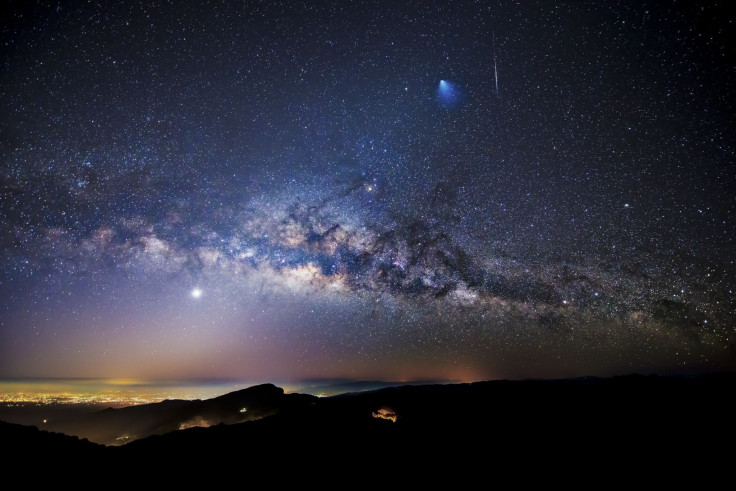How To See The Draconid Meteor Shower This Weekend

Before October’s usual meteor shower, the Orionids, occurs later this month, those in the Northern Hemisphere will get a little preview thanks to the Draconids meteor shower set to peak this weekend.
The shower will peak just a few days after the full Harvest Moon appears in the night sky. The shower is expected to peak Oct. 7 and 8, and the next meteor shower event won’t occur for another two weeks. The Orionids might be a better show, but you can at least keep an eye out for the Draconids this weekend.
The shower isn’t expected to burst like it has in past years. The most recent burst occurred in 2011, when there were up to 600 meteors per hour raining down. A meteor shower is considered as having had an outburst simply when it produces more meteors than usual. The Draconids offer a slightly different opportunity than most meteor showers because they’re best visible after sunset rather than in the early morning like most shower are. That’s when the shower is highest in the sky, it’s also conveniently before the nearly full Harvest Moon will be rising and casting a lot of light around the sky.
Those in the mid to high Northern latitudes will have the best chance at spotting the shower, according to EarthSky. There are a few things you can do to increase your chances of seeing some meteors during the shower. The first and most simple is to get away from excess light pollution, so get somewhere away from artificial lights like those in cities or on highways, says NASA. Light pollution from the moon is unavoidable, but you can try using a hat to block some of the light reflected off of the moon from your peripheral view.
You should also be prepared for the weather wear warm clothes and bring a chair or view from inside a sleeping bag so that you can be comfortable while you look up and take in as much of the sky as possible. Additionally, give yourself an hour or so for your eyes to adjust to the darkness. The meteors will appear to originate from the Draco constellation in the night sky, which is why it’s called the Draconids, but it’s still best to keep as much of the sky in view as possible. The further North you are the better your chances are for seeing the meteors.
The meteors are actually fragments coming off of the Giacobini-Zinner periodic comet that passes Earth every six years and four months. A meteor is different from an asteroid, another sun orbiting rock because instead of being made up of only rock, like asteroids, it’s also made of ice and gas. A meteor is a piece of that comet that has broken off as a meteoroid and then entered Earth’s atmosphere where it burns up leaving a streak of light behind it.
© Copyright IBTimes 2024. All rights reserved.





















